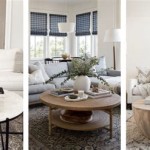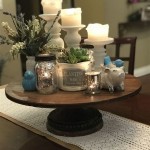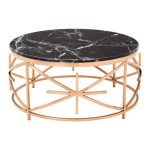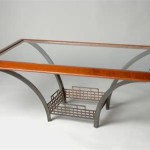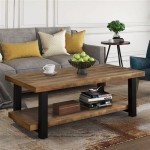What Color Should I Paint My Coffee Table? A Comprehensive Guide
Deciding on the right color to paint a coffee table requires careful consideration of several factors. The coffee table, often a centerpiece in a living room or den, contributes significantly to the overall aesthetic of the space. The chosen color should harmonize with existing décor, reflect personal style preferences, and ultimately enhance the room's ambiance. This article will explore key considerations to help determine the optimal color for a coffee table.
Assessing the Existing Décor
The most crucial initial step involves a thorough assessment of the existing décor. This includes analyzing the color palettes of walls, flooring, furniture, and any prominent accent pieces. Consistency with the existing scheme creates a cohesive and visually appealing interior. Conversely, a deliberate contrast can introduce visual interest and prevent a room from feeling monotonous. However, any such departure from the existing color scheme must be meticulously planned to ensure a balanced and harmonious result.
Consider the wall color. If the walls are painted in neutral tones such as beige, gray, or off-white, the coffee table can serve as an opportunity to introduce a pop of color. Conversely, if the walls are boldly colored, a neutral-toned coffee table might be more appropriate to avoid overwhelming the space.
The flooring also plays a vital role. Dark wood floors tend to complement lighter-colored coffee tables, creating a striking contrast. Light-colored carpets or flooring can be paired with darker coffee tables for a similar effect. The objective is to create a visual balance that prevents any single element from dominating the room.
Existing furniture, particularly sofas and armchairs, should also inform the color choice. Are the sofas upholstered in solid colors or patterned fabrics? Solid-colored sofas offer greater flexibility, allowing for a wider range of colors for the coffee table. Patterned sofas, on the other hand, may necessitate a coffee table color that complements the dominant hues within the pattern.
Take inventory of accent pieces, such as throw pillows, artwork, and decorative objects. These elements can provide clues regarding preferred color accents and can guide the selection of a coffee table color that enhances the overall aesthetic.
Ultimately, the goal is to create a unified and harmonious visual experience. The coffee table should contribute to the overall aesthetic rather than clash with or detract from the existing décor.
Understanding Color Psychology and its Impact
Color psychology explores how different colors can influence mood and evoke specific emotions. The selected color can subtly affect the atmosphere of the room, impacting how occupants feel within the space. Understanding basic principles of color psychology can help make a more informed decision.
Blue, for example, is often associated with calmness, tranquility, and serenity. A blue coffee table can create a relaxing and inviting atmosphere, making it suitable for living rooms and dens. However, an overly dominant shade of blue can feel cold or distant.
Green is linked to nature, growth, and harmony. A green coffee table can bring a sense of freshness and vitality to a room. It works particularly well in spaces that incorporate natural elements such as plants or wood furniture.
Yellow is associated with optimism, energy, and cheerfulness. A yellow coffee table can inject a dose of positivity into a room. However, an overly bright yellow can be overwhelming; a muted or pastel yellow might be more suitable for creating a balanced effect.
Red is a bold and vibrant color that represents passion, energy, and excitement. A red coffee table can make a strong statement and become a focal point in the room. However, red should be used sparingly, as it can be overwhelming if overused.
Neutral colors such as white, gray, and beige provide a versatile and calming backdrop. These colors can be easily incorporated into a variety of design styles. A white coffee table can create a clean and minimalist aesthetic, while a gray coffee table offers a sophisticated and contemporary feel. Beige provides a warm and neutral tone that complements a wide range of color palettes.
Black is a classic and elegant color that exudes sophistication and refinement. A black coffee table can add a touch of drama and contrast to a room. It works particularly well in modern and contemporary settings.
Brown is associated with warmth, comfort, and stability. A brown coffee table can create a cozy and inviting atmosphere. Different shades of brown, from light tans to rich chocolates, can evoke different moods and complement various design styles.
By considering the psychological impact of different colors, choosing a color that aligns with the desired mood and atmosphere of the space becomes easier. This adds another layer of personalization and intentionality to the design process.
Considering the Coffee Table's Style and Material
The style and material of the coffee table itself also significantly influence the choice of color. A rustic wooden coffee table, for example, might benefit from a natural stain that enhances the wood's grain, while a sleek modern coffee table could look stunning in a high-gloss lacquer finish.
For wooden coffee tables, various options are available. Staining allows the natural beauty of the wood grain to shine through, with options ranging from light and airy to dark and dramatic. Paint, on the other hand, provides a solid color that can completely transform the look of the table. Distressed finishes can add character and charm to older wooden tables, while a fresh coat of paint can rejuvenate a tired piece.
Metal coffee tables offer a different set of possibilities. Powder coating provides a durable and long-lasting finish in a wide range of colors. Metallic finishes, such as brushed silver or polished brass, can add a touch of glamour and sophistication. For a more industrial look, a raw metal finish sealed with a clear coat can be effective.
Glass-topped coffee tables present a unique challenge. The color of the base becomes the dominant factor, as the glass itself is transparent. The base can be painted or finished in a variety of materials, such as wood, metal, or even acrylic. The color of the base should complement the surrounding décor and the style of the table.
The existing hardware on the coffee table, such as knobs or pulls, should also be considered. The color of the hardware should complement the chosen color of the table. For example, brass hardware might pair well with a warm-toned paint color, while silver hardware might be more suitable for a cooler-toned paint color.
The style of the coffee table, whether it is traditional, modern, rustic, or eclectic, should guide the color selection. A formal and traditional coffee table might benefit from a classic color such as white, black, or a rich wood stain. A modern coffee table can handle bolder colors and more contemporary finishes. A rustic coffee table might look best with a natural or distressed finish. An eclectic coffee table offers the opportunity to experiment with unconventional colors and finishes.
Ultimately, the color choice should enhance the unique characteristics of the coffee table and complement its overall aesthetic. Consideration of the style and material ensures that the color is not only aesthetically pleasing but also appropriate for the specific piece.

How To Paint Your Coffee Table Notice The Little Things

How To Re Invent Your Old Coffee Table With Paint The Boondocks Blog

Coffee Table Makeover Part One Painted Tables Furniture

How To Paint Your Coffee Table Notice The Little Things

Painted Coffee Table At Home With The Barkers

15 Painted Coffee Tables The Everyday Home
17 Diy Coffee Table Makeover Ideas Using 10 Diffe Techniques Before After

Easy Chalk Paint Coffee Table Makeover You Need To See

Mint Coffee Table With Gold Feet A Makeover Little Bits Of

How To Paint Your Coffee Table Notice The Little Things
